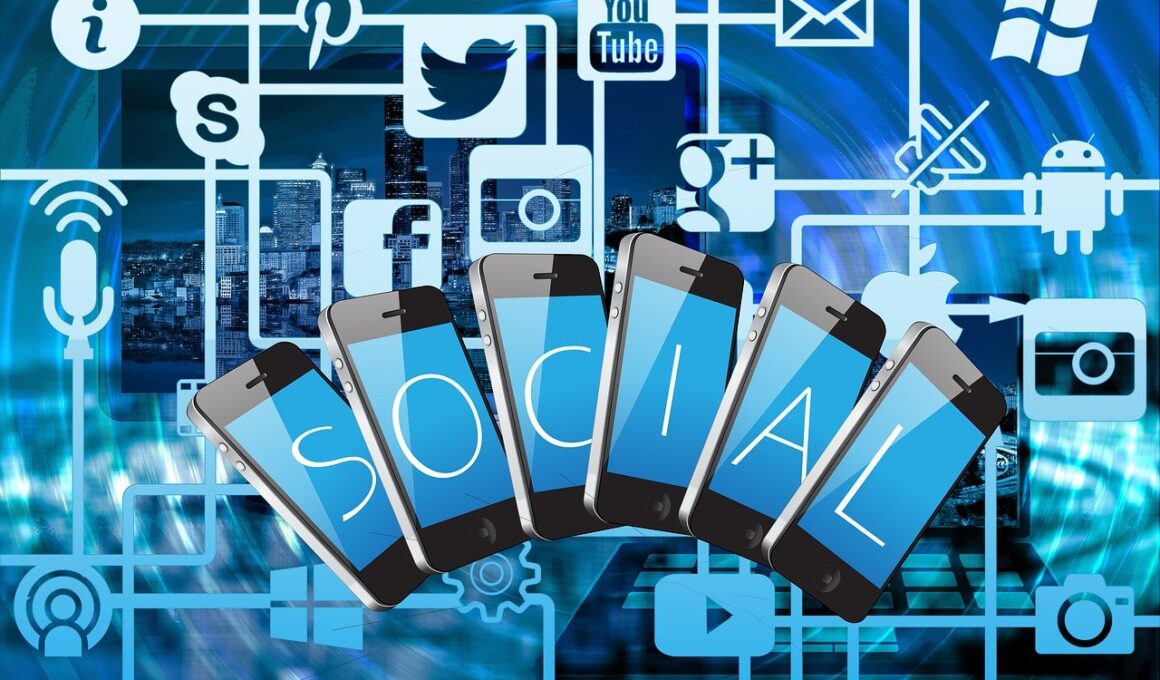Responsive Social Media Management Amid Healthcare Crises
In today’s fast-paced digital environment, social media has emerged as a critical tool for effective healthcare crisis management. Organizations must quickly adapt their online strategies to address public concerns and disseminate accurate information during crises. An effective social media presence can help healthcare institutions maintain transparency, build trust, and enhance community engagement. This involves crafting timely, relevant messages that reflect the organization’s commitment to solving issues and supporting the affected populations. Crisis communication must be proactive, employing platforms like Twitter, Facebook, and Instagram to respond and disseminate information rapidly. By establishing clear guidelines and protocols, the organization can ensure a unified voice that resonates with the audience. Monitoring trends and sentiment analysis can also help organizations tailor messages to their audience’s needs, making communication more impactful during crises. Utilizing multimedia content such as videos and infographics can help convey complex information in an engaging manner while also improving information retention. A well-thought-out social media strategy not only improves response times but also fosters a supportive online community that can aid in recovery efforts.
The importance of social media during a healthcare crisis cannot be overstated. These platforms allow organizations to reach a massive audience swiftly, which is vital during emergencies. This speed of communication can distinguish between rumors causing panic and the dissemination of factual information. For example, by using a structured approach, healthcare providers can share real-time updates on service availability, safety protocols, and health advisories. Social media not only provides a means to communicate, but it also encourages two-way dialogue where the public can engage with organizations, posing questions and seeking clarifications. It is crucial for organizations to actively monitor their channels, responding to inquiries, and correcting misinformation as it arises. Creating a dedicated hashtag for the crisis can facilitate information tracking and grouping relevant content for easier access. Leveraging influencer partnerships can also expand reach, helping to ensure important messages penetrate diverse demographics. Furthermore, documenting the organization’s response journey through social media creates an archival narrative that can be beneficial for future reflections and strategies. Overall, a responsive social media management strategy is essential for effective healthcare crisis navigation.
Engaging the Audience Effectively
Engaging with the audience during a healthcare crisis extends beyond delivering information; it requires understanding the audience’s emotional landscape. Recognizing the anxiety, fear, and uncertainty prevalent in crises allows organizations to craft appropriate messages that resonate with their followers. Utilizing empathetic language and addressing the audience’s concerns directly is crucial for building credibility and gaining trust. Encouraging personal stories through user-generated content can create a sense of community and shared experiences, thereby fostering a supportive online environment. Additionally, healthcare organizations can host live question-and-answer sessions, providing a platform for direct interaction with the public. This method not only humanizes the organization but also demonstrates a commitment to openness during challenging times. Regularly sharing updates on the organization’s efforts and progress enhances transparency, keeping followers informed and involved. Visual content such as images of frontline workers and patient success stories can evoke emotional responses and encourage positive attitudes. Ultimately, engaging effectively with the audience transforms followers into advocates, which can significantly enhance the organization’s reputation and influence during a healthcare crisis.
Another essential aspect of social media management in health crises is content strategy. Crafting a content calendar that outlines daily goals can streamline communication efforts, narrowing the focus on critical messaging while ensuring the maintenance of engagement. This strategy can include scheduled updates on health guidelines, informative articles, or engaging polls targeted at assessing public sentiment. Ease of navigation is important, allowing followers to access the most relevant information quickly. Furthermore, automation tools can assist in scheduling posts for maximum visibility during peak engagement hours. Utilizing analytics to assess which content types perform best can guide future content creation, continually refining messaging based on audience preferences. When sharing information, it is also crucial to cite reputable sources, reinforcing the authenticity of shared content. Combining various content formats, such as short videos, graphics, and written posts, creates a diverse media experience which can cater to different user preferences. A tailored content approach keeps followers engaged while fulfilling the organization’s mission to inform, educate, and guide the community during challenging healthcare scenarios.
Leveraging Technology for Enhanced Communication
Incorporating technology into social media strategies can amplify outreach and effectiveness during healthcare crises. Innovative tools like chatbots can provide real-time responses to frequently asked questions, enabling healthcare organizations to manage high volumes of inquiries efficiently. These automated systems can assist in directing individuals to reliable resources, minimizing misinformation spread. Additionally, using geo-targeting capabilities allows organizations to disseminate tailored information relevant to specific communities affected by crises. Combining traditional media outlets with social media enhances the overall communication strategy by creating a multi-channel approach. Engaging with mainstream media can also facilitate the dissemination of information through broader networks, reinforcing the organization’s message. Furthermore, employing live streaming capabilities for press conferences or briefings can enhance audience connection, placing leaders in front of the public, thereby reducing uncertainty. Utilizing feedback tools on social platforms can also prompt audience insights, gauging the effectiveness of communication efforts in real-time. Continuous adaptation based on feedback and technological advancements ensures that organizations remain responsive, equitable, and efficient when managing healthcare crises.
Evaluating the effectiveness of social media strategies during a healthcare crisis is equally crucial for future improvement. Organizations should conduct thorough post-crisis assessments to analyze their response efforts and engage in continuous learning. This evaluation can include analyzing metrics such as engagement rates, reach, and sentiment analysis to ascertain the impact of their communication strategies. Gathering audience feedback through surveys reflecting on their experience can yield valuable insights, informing future strategies. Additionally, collaborating with social media experts can provide external perspectives, identifying gaps in the response framework. Consideration should also be given to successful case studies from other organizations to inspire the development of best practices. Implementing a culture of reflection not only improves future responses but also fosters an environment of innovation and excellence. Organizations can establish regular training sessions focused on crisis management, ensuring key players remain adept in social media’s evolving landscape. By proactively enhancing their practices, organizations can position themselves as leaders in effective healthcare crisis management, ultimately benefiting the communities they serve during challenging times. This closed loop of learning emphasizes the significance of sustained, responsive social media management.
Conclusion: Future Directions in Social Media Management
In conclusion, responsive social media management has become indispensable in the realm of healthcare crisis management. As crises are inevitable, organizations must remain prepared with robust strategies to communicate effectively. The integration of empathy, real-time interaction, and technology enhances the ability to connect with audiences meaningfully. Developing content that fosters engagement creates shared experiences, allowing followers to feel heard and supported. Continuous evaluation and adaptation to best practices will ensure organizations remain responsive and effective. Preparing for future crises by embracing innovative communication technologies can further enhance organizational resilience. As healthcare continues to evolve, so too must the strategies used to engage with the public through social media channels. By staying ahead of emerging trends and shifts within digital communication paradigms, organizations can fortify their reputations while positively impacting community health outcomes. Ultimately, the engagement fostered during crises can empower organizations to build lasting relationships with their audiences, reinforcing trust and reliability in times of uncertainty. Therefore, it is essential for healthcare organizations to prioritize and refine their social media management practices for long-term success.
These actionable insights empower healthcare organizations to utilize social media effectively within crisis management. By integrating empathy, relevance, and innovation into their strategies, organizations can develop genuine connections with their audiences, ensuring that they are well-informed and supported throughout challenging times.


